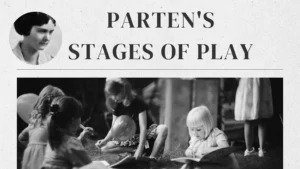Welcome to our comprehensive preschooler chair buying guide! Choosing the right preschool chairs can feel overwhelming. With countless options on the market and various factors to consider, it’s easy to feel uncertain about making the best decision. The wrong choice can affect students’ comfort, safety, and even their ability to concentrate. But don’t worry—I’m here to guide you through the process.
Selecting the best preschool chairs for your classroom requires understanding the importance of comfort, durability, and design. By focusing on key factors such as material quality, ergonomics, and the specific needs of your classroom, you can make an informed decision that enhances your students’ learning environment.
Don’t let the overwhelming selection confuse you. In this comprehensive preschool chair buying guide, we’ll explore the different types of preschool chairs, discuss the important features to look for, and offer expert tips to help you make an informed decision.
The Importance of Choosing the Right Preschool Chair
When outfitting a classroom, preschool chairs are a crucial element. They must be comfortable and safe and appropriately sized for young children. The right chair can significantly impact a child’s posture, attention span, and overall learning experience. Chairs that are too high or too low can lead to discomfort and distract from learning, while poorly designed chairs can pose safety risks.
- Ensuring Student Comfort and Safety:
Young children spend hours each day sitting in their chairs. A chair that provides adequate support can prevent discomfort and promote good posture, essential for reducing fatigue and maintaining focus. - Promoting Healthy Development:
Properly designed chairs support the spine and encourage the correct seating posture, which is critical during the early years when children’s bodies are still developing. - Enhancing Classroom Engagement:
When children are comfortable, they are more likely to stay focused and participate actively in classroom activities. A well-chosen chair can contribute to a more dynamic and productive learning environment.
Preschool Chair Seat Height by Grade Level
When selecting preschool chairs, one of the most critical factors is ensuring the correct seat height. Choosing the wrong height can lead to discomfort, poor posture, and reduced concentration among students. A chair that is too high or too low can cause discomfort, distracting children from their learning activities. Ensuring that each child can sit with their feet flat on the floor and their knees at a right angle promotes better posture and focus.

How to Choose the Correct Seat Height?
- Preschool (Ages 3-4):
For younger preschoolers, typically between 3 and 4, chairs with a seat height of about 8 to 10 inches are most suitable. This height allows the children to sit comfortably with their feet flat on the floor and knees at a right angle. - Pre-Kindergarten (Ages 4-5):
As children grow, they require slightly taller chairs. For pre-kindergarten students, chairs with a seat height of 10 to 12 inches are generally ideal. - Kindergarten (Ages 5-6):
The appropriate seat height for kindergarten students usually ranges from 12 to 14 inches. This ensures that the chair supports proper posture and comfort, which is essential for focusing on classroom activities.
Selecting the correct chair height by grade level helps to ensure that children are seated comfortably, promoting better focus and engagement.
Preschool Chair Types
Preschool chairs come in various types, each designed to accommodate young children’s specific needs and activities. Here’s a rundown of some common types you might consider for a preschool setting:
- Stackable Chairs: These chairs are lightweight and designed to stack easily, saving space when not in use. They are perfect for classrooms that require flexible seating arrangements.
- Adjustable Chairs: These chairs can be adjusted in height, making them suitable for children of different ages and sizes. This adjustability ensures ergonomic seating positions that can grow with the child.
- Rocking Chairs: Rocking chairs can be a calming addition to any preschool, providing gentle motion to help soothe and relax children.
- Bean Bag Chairs: For casual seating, bean bag chairs offer children a soft, comfortable option during story time or free play.
- Cubby Chairs: These chairs feature built-in storage under the seat, perfect for storing books, art supplies, or personal items. They help keep the classroom tidy while providing seating.
- Foldable Chairs: Great for events or activities that require temporary seating. These chairs are easy to store when not in use and can be set up quickly.
- Padded Chairs: These chairs offer additional comfort through padded seats and backs. They are ideal for activities that require children to sit for extended periods.
Preschool Chair Material
Material choice is critical in selecting preschool chairs for longevity, comfort, and maintenance. The most common materials used in preschool chairs are plastic, wood, and metal, each with advantages and disadvantages.

Plastic Chairs
Advantages:
- Lightweight: Easy for children to move around without assistance.
- Easy to Clean: Non-porous surfaces resist stains and are easy to wipe down.
- Variety of Colors: Available in a range of vibrant colors, which can be appealing to young children.
Disadvantages:
- Less Durable: It may not last as long as wooden or metal options, especially under heavy use.
- Environmental Impact: Plastic chairs are not always eco-friendly, though some options are made from recyclable materials.
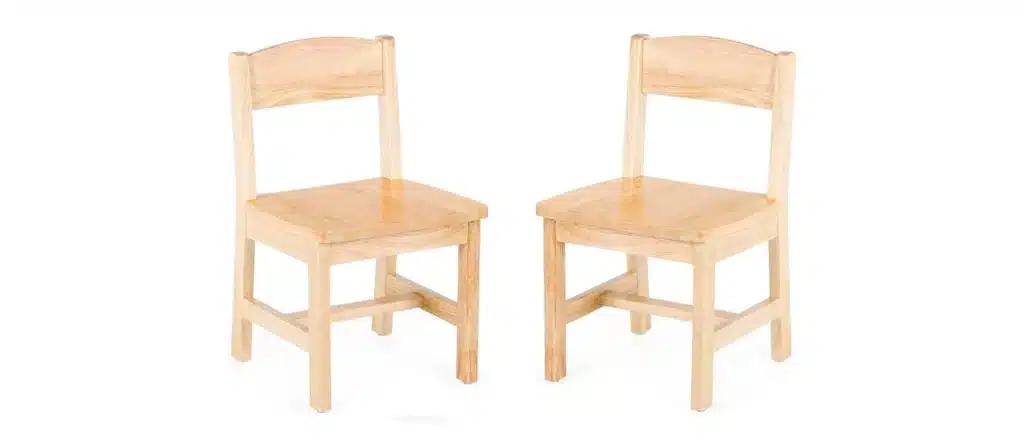
Wooden Chairs
Advantages:
- Aesthetic Appeal: Offers a classic and warm look that can complement any classroom décor.
- Sturdiness: Highly durable and can last for many years with proper care.
- Eco-Friendly: Many wooden chairs are sustainable and can be recycled or repurposed.
Disadvantages:
- Heavier: It can be more challenging for children to move around.
- Maintenance: This may require more care to avoid scratches and maintain appearance.

Metal Chairs
Advantages:
- Durability: Extremely robust and can handle a lot of wear and tear.
- Stability: Provides a solid base, reducing the risk of tipping over.
- Longevity: Metal chairs often have a longer lifespan than plastic or wood.
Disadvantages:
- Weight: Heavier and more challenging for children to move.
- Comfort: Additional padding or cushions may be required for long periods.
Preschool Chair Legs and Glides
The chair legs and glides’ design affect preschool chairs’ stability and safety, and poorly designed legs can lead to tipping hazards. In contrast, inappropriate glides can damage classroom flooring and make noise during movement.
Chair legs should be sturdy and designed to prevent tipping. Chairs with four legs provide better stability than those with fewer or oddly shaped legs. Glides attached to the bottom of the chair legs should be chosen based on your classroom flooring. Rubber glides are ideal for hard floors as they prevent slipping and minimize noise, while felt glides work well on carpeted floors to prevent snagging.
Chair Legs
- Straight Legs:
Most preschool chairs have straight legs, which provide a stable base. Straight legs are less likely to tip over, making them safer for young children. - Angled Legs:
Some chairs have slightly angled legs, which can offer additional stability. However, these chairs may take up more space, which is something to consider when planning your classroom layout.
Chair Glides
- Plastic Glides:
Plastic glides are joined on preschool chairs and help protect floors from scratches. They also allow the chairs to slide effortlessly across smooth surfaces. - Rubber Glides:
Rubber glides offer more grip and are ideal for classrooms with hard floors. They prevent chairs from sliding too easily, reducing the risk of accidents. - Metal Glides:
Metal glides are durable and provide a smooth slide on various surfaces. They are often used with felt pads to reduce noise and protect flooring.
Choosing the right material ensures that your chairs will last longer and better meet the needs of your students.
Chair Design: Prioritizing Safety and Comfort
The design of preschool chairs should prioritize both safety and comfort. Features such as rounded edges, sturdy bases, and non-slip feet are essential for preventing accidents and ensuring children can sit comfortably for extended periods.
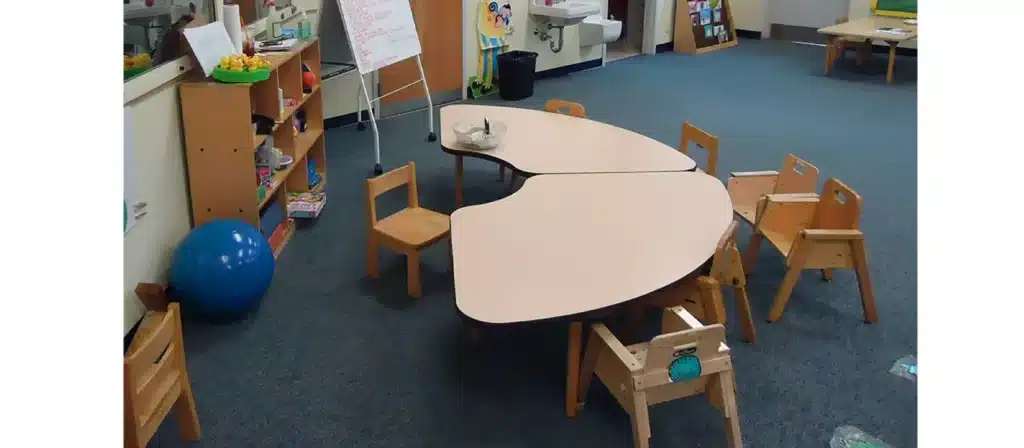
Key Design Features:
- Rounded Edges: Reduces the risk of injury from sharp corners.
- Stable Base: A broad base or rubber feet to prevent the chair from tipping.
- Stackability: Chairs that can be easily stacked save space and simplify storage.
- Adjustable Height: Some chairs offer adjustable legs, allowing them to grow with the child.
Customization Options: Tailoring the Chair to Your Needs
Many suppliers offer customization options to help tailor preschool chairs to meet specific needs. Whether it’s adjusting the height, choosing a particular color scheme, or adding the school’s logo, customization can make a significant difference.
Common Customization Options:
- Color Selection: Match the chairs to your classroom’s color theme.
- Size Adjustments: Modify the height or width to accommodate different age groups.
- Branding: Add logos or school names to the chairs for a personalized touch.
- Material Upgrades: Choose higher-grade materials or finishes for enhanced durability.
Customization allows a better fit within your classroom and enhances the learning environment by creating a cohesive and stimulating space.
Preschool Chair Buying Guide: Budget Considerations
Budget is always a consideration when purchasing classroom furniture, but balancing cost with quality is essential. While it might be tempting to opt for the cheapest option, investing in higher-quality chairs can pay off in the long run through durability, reduced replacement costs, and improved classroom aesthetics.
Tips for Budget Management:
- Bulk Purchases: Often, suppliers offer discounts for large orders.
- Long-Term Investment: Consider the lifespan of the chairs. Higher upfront costs may result in savings over time.
- Financing Options: Some suppliers offer financing, allowing you to spread the cost over several months.
When managing a budget, it’s essential to prioritize the most important features of your classroom and avoid cutting corners that could compromise safety or comfort.
Choosing a Preschool Furniture Supplier
Selecting the right supplier is just as important as choosing the right chairs. A reliable supplier offers high-quality products, excellent customer service, timely deliveries, and transparent communication. When evaluating suppliers, consider their reputation, product range, and the flexibility they offer in terms of customization and order management.
How to Choose the Right Supplier:
- Reputation: Look for suppliers with positive reviews and a history of delivering quality products.
- Product Range: Ensure the supplier offers a wide variety of options.
- Customization Flexibility: Check if the supplier can accommodate your specific needs.
- After-Sales Service: Consider suppliers who provide strong after-sales support, including warranties and easy returns.
Working with a trusted supplier ensures that your preschool chairs meet all necessary standards and that you receive the support needed to handle any issues that may arise.
Xiha Montessori is a great choice; we are a leading preschool furniture manufacturer and supplier with 20 years of experience in education, providing one-stop service from classroom layout design and product customization to shipping. We have served more than 2000 kindergartens and education centers worldwide.
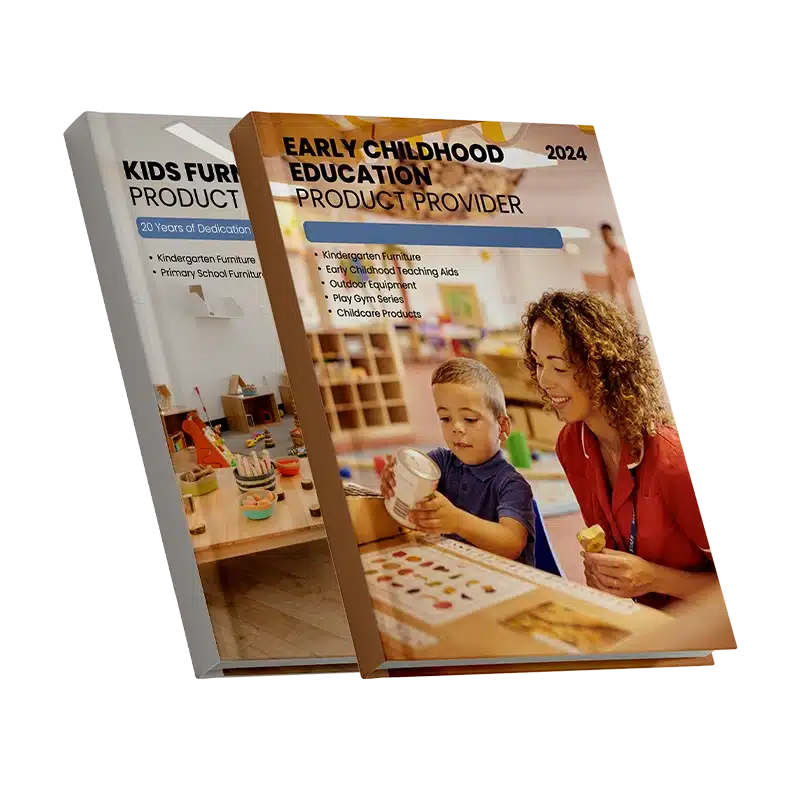
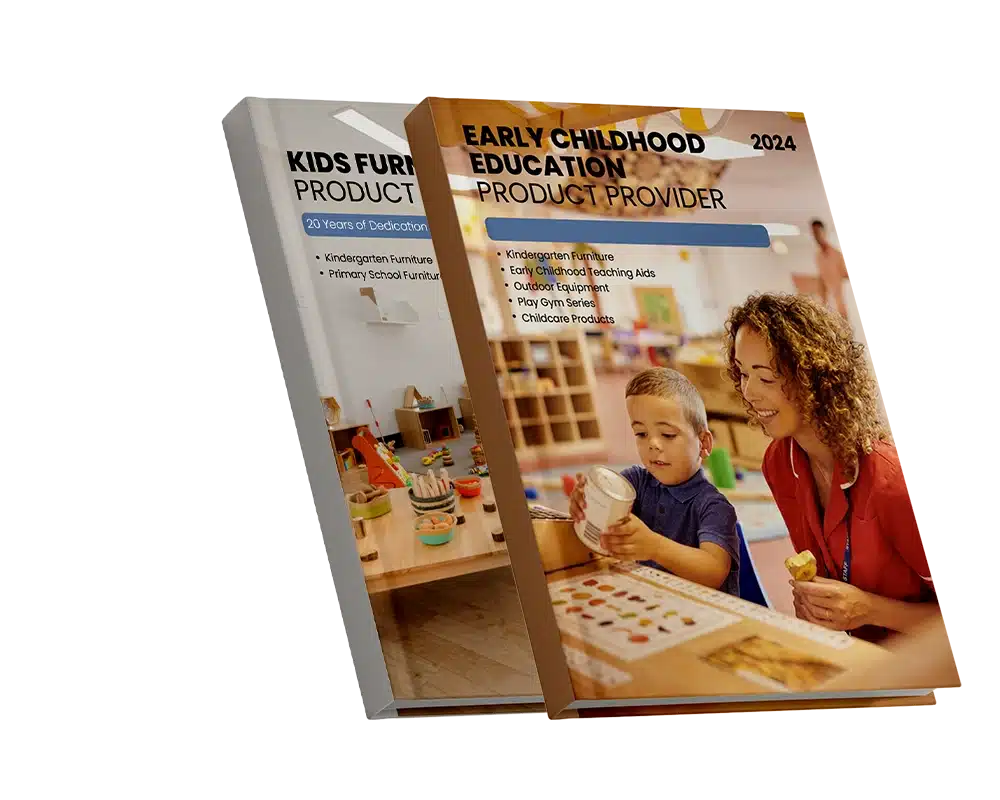
How to Clean and Maintain Preschool Chairs?
Maintaining cleanliness and ensuring the longevity of preschool chairs is vital for creating a safe and healthy learning environment. Regular maintenance keeps the chairs looking new and extends their lifespan.
Cleaning Plastic Chairs
Plastic chairs are generally the easiest to clean. A simple solution of mild soap and water can remove most stains and dirt. A gentle scrub with a soft brush may be necessary for tougher stains. It’s important to avoid harsh chemicals that could degrade the plastic over time.
Cleaning Wooden Chairs
Wooden chairs require more careful cleaning to avoid damaging the wood. Use a damp cloth with a mild detergent to clean the surface. After cleaning, dry the chairs immediately to prevent moisture from seeping into the wood, which could cause warping or cracking.
Cleaning Metal-Framed Chairs
Metal frames can be wiped down with a damp cloth and mild detergent. To prevent rust, especially in humid environments, ensure the metal is thoroughly dried after cleaning. Consider applying a light coat of wax or furniture polish for additional protection.
Regular Maintenance
- Inspect for Damage:
Regularly check chairs for any signs of wear and tear, such as cracks, loose screws, or bent legs. Promptly addressing these issues can prevent accidents and prolong the chairs’ usability. - Tighten Screws and Bolts:
Over time, screws and bolts can loosen. Regularly inspect and tighten them to maintain the chair’s stability. - Replace Worn Glides:
Chair glides can wear down with use, especially on rough surfaces. Replacing worn glides ensures that the chairs move smoothly and protect the floors.
Proper cleaning and maintenance of preschool chairs help maintain a clean and safe classroom, ensuring that the furniture remains functional and attractive for years.
Frequently Asked Questions Before Buying a Preschool Chair
1. How Do I Determine the Right Chair Height?
The ideal chair height should allow children to rest their feet flat on the floor with their knees at a right angle. It is critical to choose chairs that match the height of the classroom tables to ensure a comfortable seating position.
2. How Often Are Kindergarten Chairs Replaced?
The lifespan of a kindergarten chair depends on its material and use. On average, chairs may need to be replaced every 3 to 5 years. Regularly checking for wear and tear will help ensure the chairs are safe and comfortable.
3. How Can I Be Sure of the Quality of My Chair?
Look for chairs that meet safety standards and are certified. It is also a good idea to physically inspect the chair before purchasing to check for defects or potential safety hazards.
4. Can Preschool Chairs Be Customized?
Yes, many manufacturers offer customization options. You can choose from various colors, sizes, and materials to meet the specific needs of your classroom. Customization can also include adding a school logo or adjusting the chair design to better support children’s ergonomics.
5. What is the Ideal Number of Chairs Classroom?
The ideal number depends on the size of the classroom and the number of students. A typical classroom may require one chair per student, plus a few additional chairs for visitors or special events. For flexibility, it is a good idea to have some stackable chairs.
Conclusion
Selecting preschool chairs requires careful consideration of several key factors. Educators must prioritize comfort and functionality to create an engaging learning environment. The right choice in seating can transform classroom dynamics and enhance student engagement. Teachers have observed that diverse seating options often inspire innovative curriculum choices. Flexible seating arrangements encourage active participation and foster creativity among young learners. A well-thought-out selection from the “Preschool Chair Buying Guide” ensures a safe and supportive space for children to thrive. Investing in quality chairs contributes to a positive educational experience.






